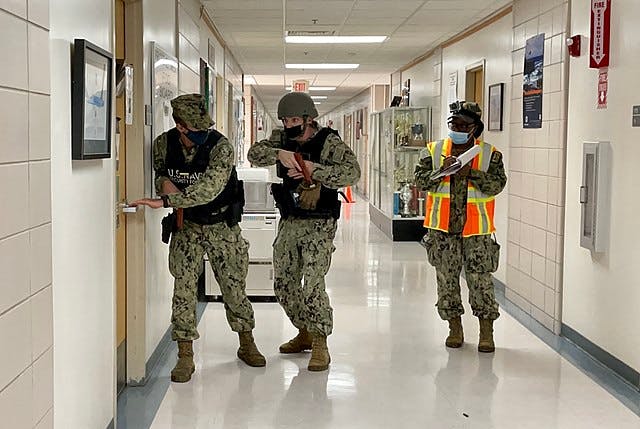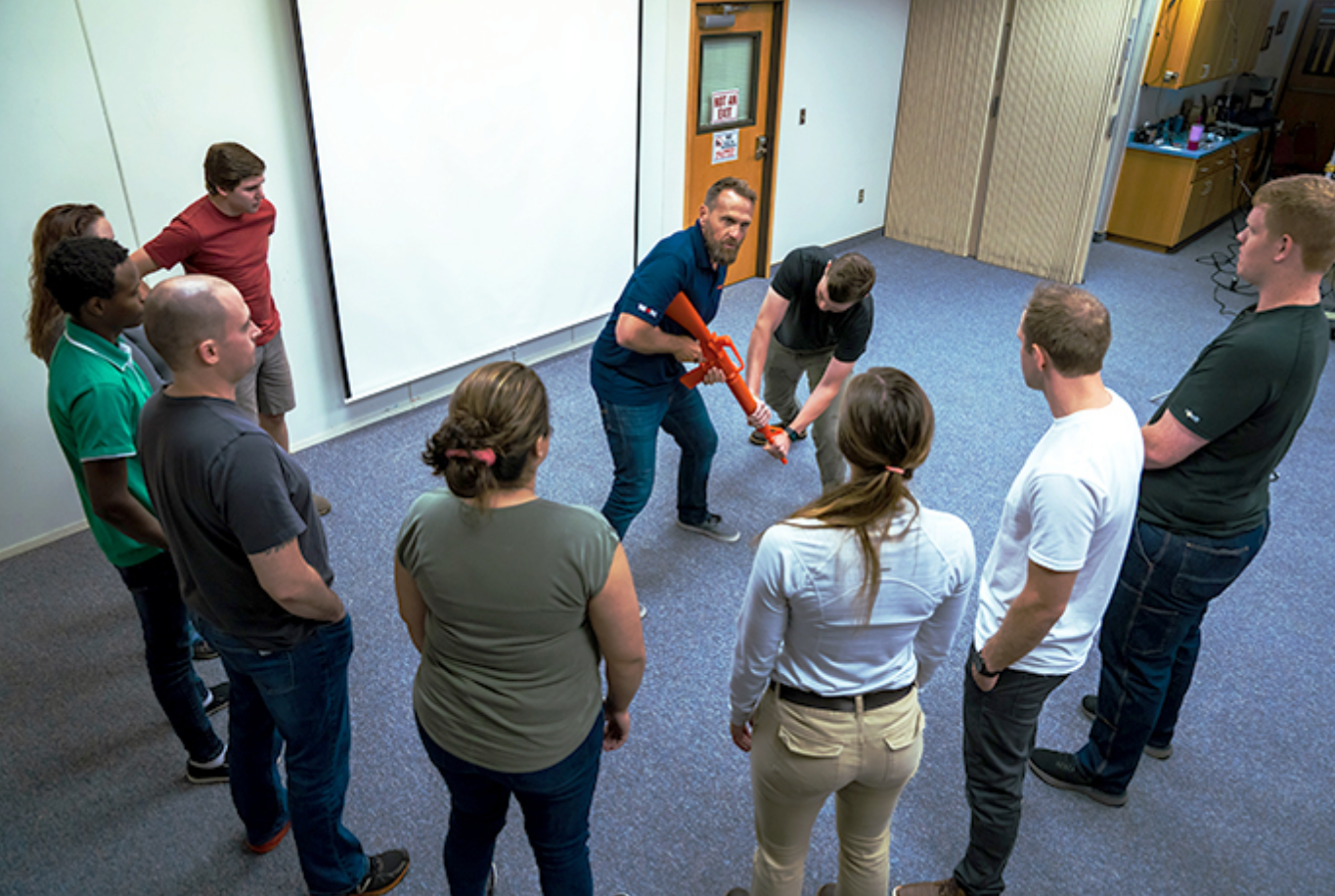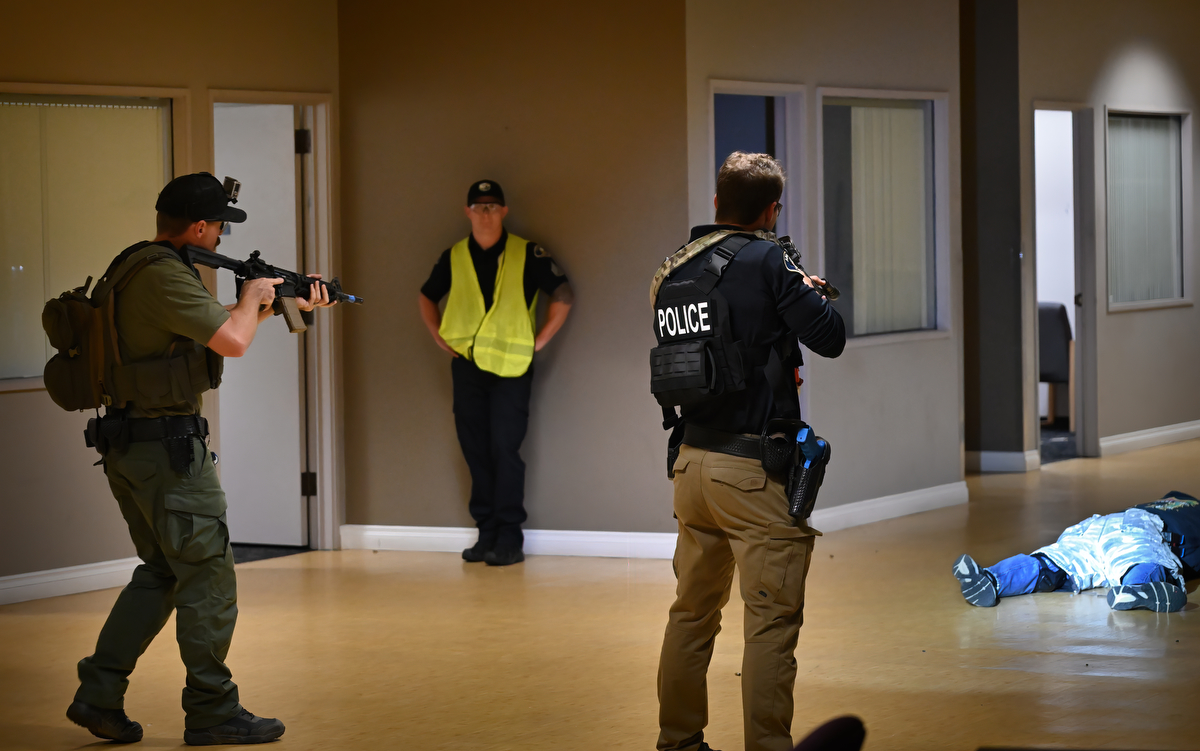Understanding Active Shooter Training: Ideal Practices and Protocols
Understanding Active Shooter Training: Ideal Practices and Protocols
Blog Article
Equip Yourself With Crucial Energetic Shooter Survival Training Abilities to Mitigate Hazards and Save Lives
In today's world, being planned for unexpected and possibly harmful scenarios is becoming significantly vital. Energetic shooter cases have regrettably end up being a fact that companies and people have to address proactively. Furnishing oneself with critical survival training skills can make a considerable difference in mitigating dangers and ultimately conserving lives. As we check out the different aspects of active shooter survival training in the following areas, you will gain beneficial insights right into just how readiness, quick thinking, and definitive action can be crucial in such traumatic scenarios.
Recognizing Energetic Shooter Circumstances
In understanding active shooter situations, individuals have to comprehend the facility characteristics and behaviors connected with such high-stress occurrences. Active shooter scenarios are defined by their unforeseeable and rapidly developing nature, creating a feeling of chaos and concern amongst those involved. Active Shooter Training. Recognizing the psychology of an active shooter, including prospective intentions and patterns of behavior, is vital for creating reliable response strategies

In addition, understanding the potential influence of tension and anxiety on decision-making during an active shooter situation is necessary for preserving a clear mind and taking decisive activity when confronted with unavoidable threat. By recognizing the intricacies of energetic shooter occurrences, individuals can better equip themselves with the knowledge and skills needed to alleviate threats and save lives efficiently.
Developing Situational Recognition
Recognizing the psychology of an active shooter is foundational for creating situational recognition in high-stress events. Situational awareness includes being cognizant of one's environments, recognizing possible risks, and recognizing the dynamics of a situation to make informed decisions rapidly. In energetic shooter circumstances, people must have the ability to analyze the atmosphere, determine departures, and assess the very best strategy to guarantee their safety and security and that of others.
To boost situational awareness, individuals should practice mindfulness and listening in their lives, as these skills can equate right into enhanced recognition during emergencies. Educating programs that simulate active shooter scenarios can also assist people improve their situational understanding by exposing them to realistic situations and educating them exactly how to respond effectively under pressure. Additionally, staying informed regarding usual active shooter strategies and knowing with emergency situation procedures can contribute to a positive approach in getting ready for such dangers.

Implementing Run, Hide, Fight Strategies
When encountered with an energetic shooter circumstance, people should promptly execute the Run, Hide, Battle techniques to optimize their opportunities of survival. These techniques give a structured strategy to responding effectively in such high-stress circumstances.
First of all, the "Run" part highlights the importance of swiftly leaving the location if it is safe to do so. When running, it is vital to have an escape course in mind and urge others to follow, while leaving personal belongings behind.
Second of all, if running is not a viable option, individuals should "Hide" in a secure place. This includes discovering a place out of the shooter's sight, securing or barricading doors, silencing electronic tools, and remaining quiet until assistance shows up.
Last but not least, as a last resource, individuals may need to "Battle" back versus the shooter to safeguard themselves and others. This can involve improvising weapons, creating diversions, and working collectively to overpower the danger.
First Help and Triage Techniques
Having successfully applied the Run, Hide, Battle techniques in feedback to an energetic shooter scenario, individuals need to currently outfit themselves with crucial initial aid and triage strategies to supply prompt help in the aftermath of such events. Active Shooter Training. In the disorderly aftermath of an active shooter occasion, punctual clinical attention can be vital in saving lives. basics By being prepared with these here are the findings very first aid and triage methods, people can not just minimize the influence of the active shooter event but also contribute to saving lives in the prompt results.
Psychological Strength and Recuperation
Individuals impacted by an energetic shooter event need to prioritize growing mental durability to facilitate their healing from the distressing experience. In the after-effects of an active shooter incident, survivors might experience a variety of feelings such as concern, stress and anxiety, guilt, or also post-traumatic anxiety condition (PTSD)
Recuperation from an active shooter occasion is a complicated process that requires time, persistence, and a solid support system. By prioritizing psychological durability and looking for proper assistance, survivors of energetic shooter occasions can improve their healing and restore their lives after such a harrowing experience.

Conclusion
In conclusion, obtaining energetic shooter survival training is essential to improving readiness in the face of such threatening circumstances. Recognizing the dynamics of energetic shooter cases, establishing situational awareness, applying run, conceal, battle methods, and discovering very first help and triage strategies are important skills for saving lives.
Active shooter incidents have unfortunately come to be a reality that organizations and people have to address proactively.In understanding energetic shooter scenarios, individuals must grasp the complex characteristics and actions linked with such high-stress occurrences. Training programs that mimic active shooter situations can also help people boost their situational recognition by exposing them to realistic scenarios and teaching them just how to respond successfully under stress.Having effectively carried out the Run, Hide, Fight strategies in response to an active shooter situation, individuals should currently outfit themselves with vital first aid and triage strategies to provide prompt aid in the aftermath of such cases. By being prepared with these first help and triage techniques, people can not only reduce the effect of the active shooter occurrence but additionally add to her response conserving lives in the instant after-effects.
Report this page